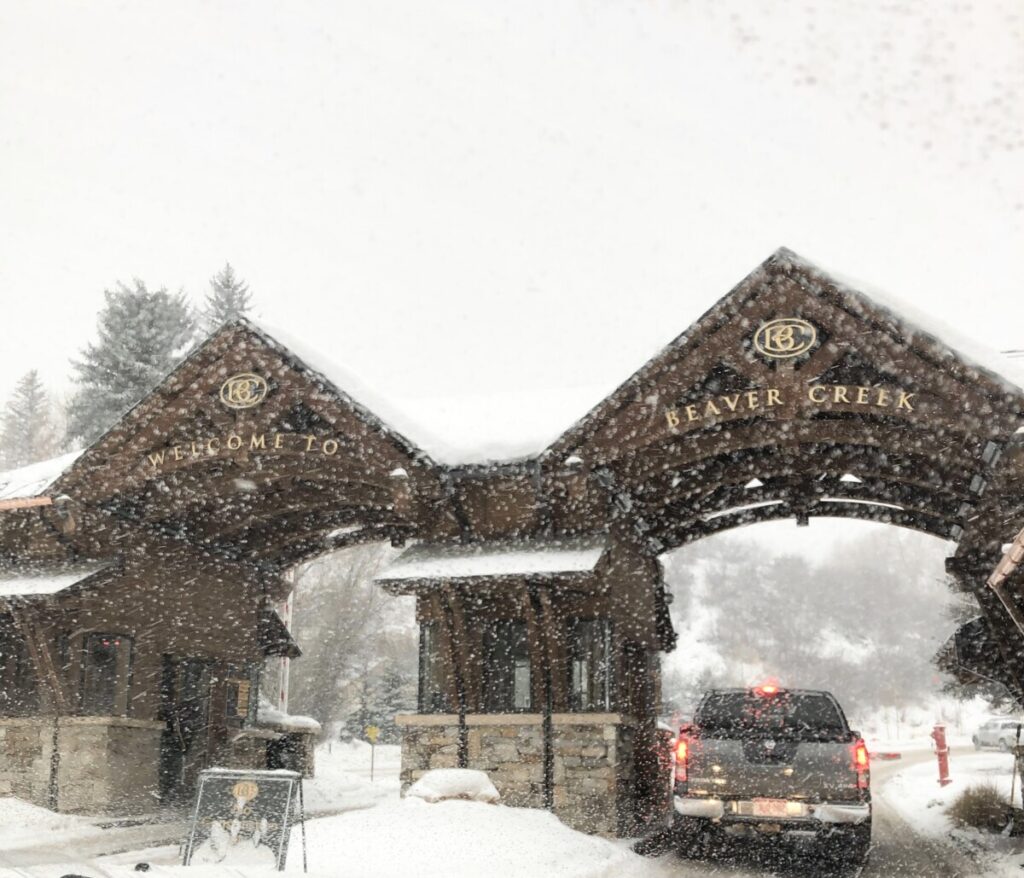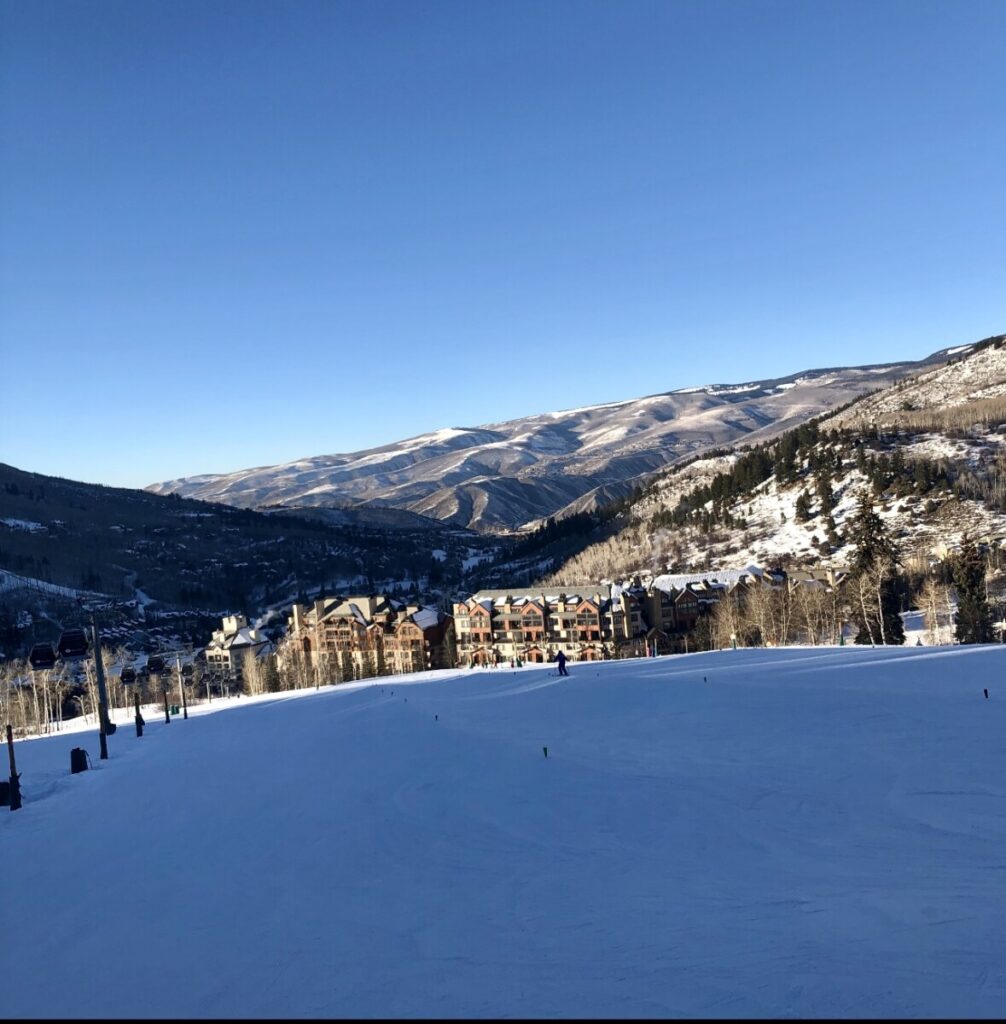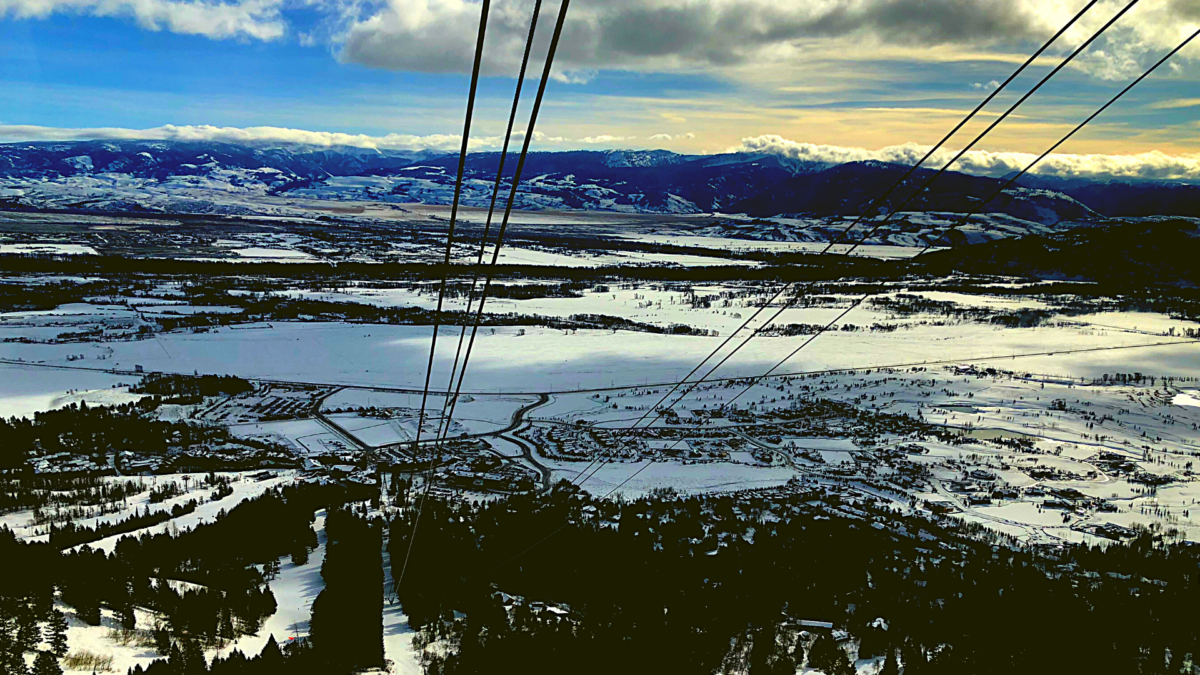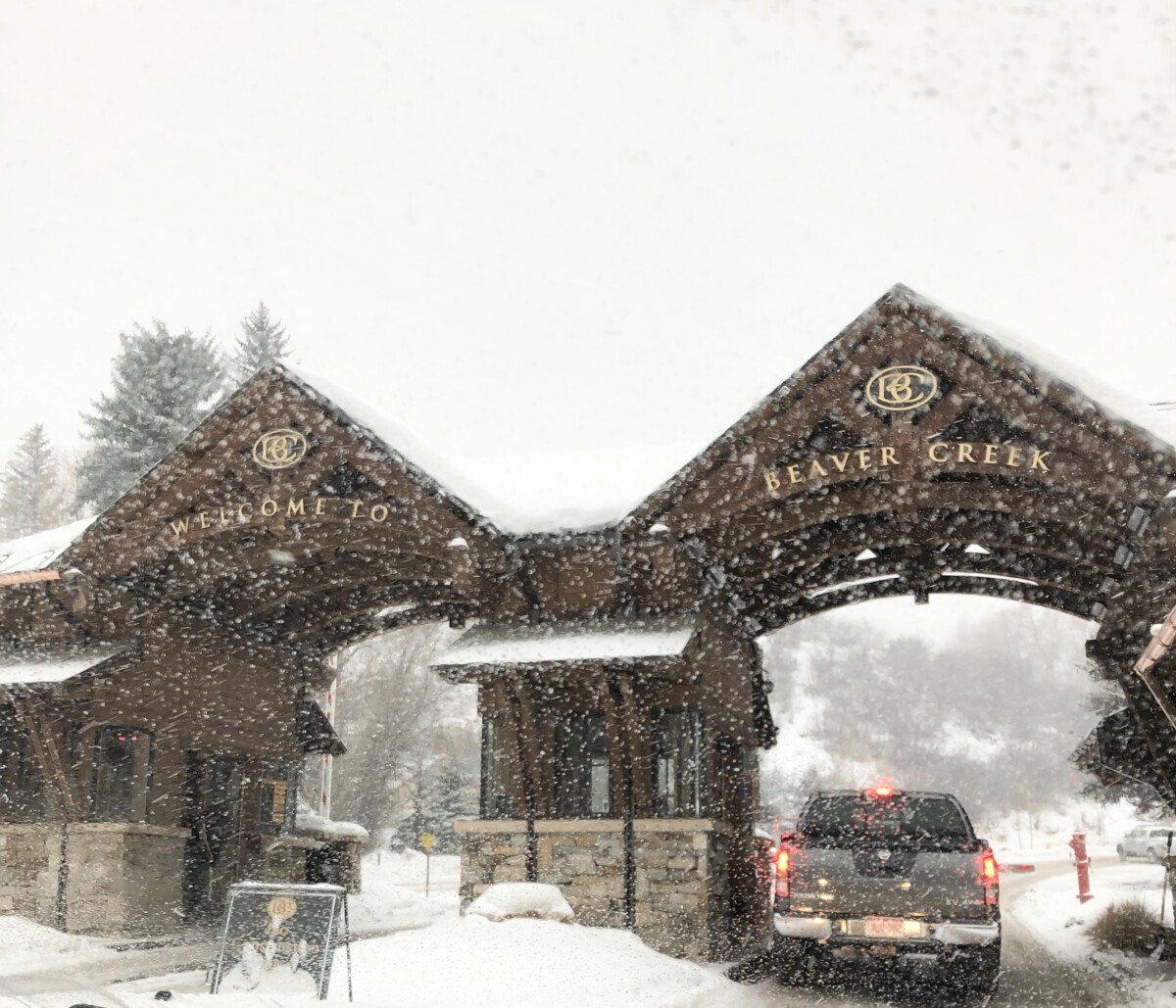Introduction
The average guest at a ski resort at some point made the active decision to give money to this specific company and become their customer. There are innumerable resorts and probably even more places to ski independently, but a customer’s choice of a resort makes a large impact on which resorts succeed and which ones fail to thrive. Running a resort is challenging and every worker there has a part to play in creating the optimal experience for their customers and consumers. While there is a profit-driven aspect to the art of running a resort, what is also extremely important is the ability to give the consumer what they want—the experience of having a good vacation.
People are different and can be picky, but each resort has to focus on a certain audience to target so that they can pull them in large numbers. Throughout this post I want to look at how one specific resort, Beaver Creek, is able to draw people in, and what their marketing strategies tell us about the ski resort industry in general. I want to observe how Beaver Creek marketing has evolved over time and what this tells us about how advertisements in general have changed. I picked Beaver Creek because I can speak of my own experience there and what I saw from them that made people like me want to go back. That being said, I will also talk a little about the overall management company, Vail Resorts, that Beaver Creek Resort is a part of. I also want to look at their beginnings, and how their advertisements changed over time. My argument is that while marketing strategies change based on new technology, customer research, and overall developments, ski resorts more importantly rely on a steady narrative for themselves to try and create a unique, niche customer base.
Themes of Marketing
The way resorts acquire customers is by making a brand for themselves. Resorts have to map out what they want to become, what they want to achieve, and to whom they want to appeal. By creating an identity for themselves, many of them create new realities for their consumers. Because of this, the architecture, services provided, and deliberate choices that build the customers’ overall experience of the resort all create a demand for said resort. According to Isabelle Frochot and Dominique Kreziak’s article, “Customers’ Perceptions of Ski Resorts’ Images: Implications for Resorts’ Positioning Strategies” (May 2008), “Studies also show that customer demand is evolving towards more service quality and comfort and more authenticity.” This journal article also relates that diversification of snow and out-of-snow activities are mattering less, which is interesting. Obviously, what the resort has to offer is important, but this article shows us that there is something more the consumer is looking for. This same article relates that, when consumers were shown four pictures depicting services the resort offers, the picture that most attracted clients changed for different resorts and demographics. For example, consumers at small and mid-sized resorts tended to cherish or be more attracted to the picture of a ski instructor leading a happy child. These consumers were more attracted to resorts that portrayed a family-centered holiday who were experiencing skiing as a major part of the resort’s activities. In other resorts, like ones frequented by consumers who consider themselves “extreme” or “seasoned” skiers, consumers rejected this picture of the ski instructor. This research shows that a large part of marketing is finding your audience and perfecting your ad content to be directed to incentivize them to travel there.
Consumers want to have the most authentic experience with high-quality service, meaning that they search for their own specific place that is able to provide the experience they want. This is another reason why resorts want to branch out in their marketing and perhaps market to as many kinds of people as possible. Something else worth noting is that the marketing strategies and funds allocated towards marketing have largely shifted to become more focused on data, personalized customer support, social media marketing, and general automation, to integrate newer technologies. This means that more personalized marketing happens, with different emails or offers sent out to particular types of customers. Still, the resort wants to market to a specific demographic and have a reputation that precedes the experiences it has for the customer. Many methods like magazine marketing and posters are still somewhat ubiquitous and interesting to observe. For this project I am focusing on Beaver Creek and what it has done over time to increase demand and attract customers. A common theme is that this resort stays true to the image it first wanted to portray or show to the public.
The Beginning of an Empire
To first attract customers, a resort has to market its name and make advertisement campaigns that convince a potential new customer to choose it over another resort. Resorts go about this in different ways, and no one resort will have the same advertisement goals and want to market to the same people as any other resort. Beaver Creek, a former lettuce patch, was built in 1980, but planning for it began in the early 70s. In fact, the area the resort was built on was going to help host the ‘76 Winter Olympics. The Olympic committee wanted to construct Beaver Creek to host Alpine events, with Denver being the formal host. This idea was voted against and not put into motion due to some Coloradan concerns with transportation and environmental consequences. The idea of a resort still lingered, though, and the Vail Association was responsible for the development of Beaver Creek. As skiing moved from a mode of transportation, to an elitist’s favorite pastime, to a more accessible recreational sport, resorts started sprouting all across the Western landscape of America. There was a lot of opposition from environmentalists during the development of Beaver Creek because of the threat posed to the natural ecosystem, air quality, and wildlife that inhabit the area. Despite this, Vail Resorts managed to get a permit from the U.S Forest Service, and a contract to build Beaver Creek. That being said, Beaver Creek was one of, if not the last, major resort to be built out West. It first opened for skiing in December of 1980. At the time, the resort had six chair lifts and one slope-slide lodge. In 1980, there was not much there, and it initially was not that successful. It was even considered a ghost town up until 1985, as it didn’t have a single hotel room. The resort began to attract skiers when investor George Gillet bought Vail Associates and started offering discounts to incentivize hotel developers to start coming to Beaver Creek. Things started getting busy and coming alive as Beaver Creek wanted to cater to the richest families. They tried to replicate a “European,” chic ski experience. It was built as a “cousin-resort” of Vail, but an important difference to note that would help promote it is that it was built in a cozy valley. A few years after opening, it included golf courses that pop into view as you cross into the resort through a fancy gated entrance. There are no parking lots that would distract the eye of a customer from the luxury of the surroundings. Hotels eventually set up shop there, including a 300-room Hyatt in 1989, which provided visitors with a luxurious 5-star hotel experience. Some amenities this Hyatt has today include a huge swimming pool, eight jacuzzis, a library, a three-story lobby bar, and five fireplaces. Besides the Hyatt, The Ritz Carlton among other lux brands have set up shop there today. Real estate sales even reached a peak of $140 million in 1989. Eventually, Beaver Creek began marketing these hotel chains and making millionaires and billionaires their primary consumer targets. Even within the community, clubs hosting only the elite Beaver Creek property owners with access to premier restaurants and amenities, like the Beaver Creek Club, have been established. This Beaver Creek Club was founded over thirty years ago, and markets a chance to elevate your home ownership with friendships, exclusive services, and a connection to the nature and mountains around you during all four seasons. They offer up a most pristine experience, promoting tennis, skiing, and golf, and today, just to join the Beaver Creek Club, there is a $12,000 initiation fee. This club is only for the most wealthy, and allows for parties at an upscale lodge or in a slope-side cabin. Other perks include dinners at expensive restaurants and lodges reserved just for them. An interesting number to show just how coveted houses were in Beaver Creek is that the townhouses were selling for $200-$400 per square foot just a decade after it was built. Around the same time, Aspen and Vail had equivalents going for $400-$600 per square foot and Deer Valley had townhouses going for $80-$200 per square foot. Beaver Creek was built for the upper class customer and while not so elitist today, the fact still remains that skiing at Beaver Creek is an expensive privilege.

Architecture
The architecture mirrors that of a European alpine village integrated into the Rocky Mountains. They use texture-rich materials like wood, forged metals, European Stucco, and indigenous stone that help to model simple, natural forms. These forms create a reality that reflects alpine architecture in European towns and Colorado rural settlements. Beaver Creek Village has guidelines to specifically use this type of architecture to perfect the feel of a mountain retreat that integrates nature with a smooth, pristine-looking human settlement. They aim to blend the architecture visually into the mountain range, as well as create an ambiance that is meant to evoke a cozy, strong sense of protection from outside weather and snow. Apparently, their aim is to add to the environment around them, a safe human settlement, and not detract from it. While these are meant to apply to Beaver Creek Village, there is a design checklist which is meant to act as a roadmap to any new building or hotel that undergoes construction at the resort. Another interesting aspect is that the resort generally wants to restrict buildings to a maximum height of 35 feet. The resort wants exterior walls to convey strength and thickness, probably wanting to allude to the safe haven the rooms inside provide from the cold, harsh weather on the outside. In regard to structures, priority will be given to enduring, top-notch quality products with subdued, neutral colors. Overall, the resort wants to give off a sense of visual harmony and richness. The main focus is that architecture should integrate itself naturally into the setting around it, with an emphasis on prioritizing the value of the natural landscape around them.

Image Credit.Beaver Creek Village Architecture seen from above. taken from my iPhone
How Marketing Has Evolved
Beaver Creek Resort’s first advertisements were in magazines and ski newspapers. Built close to interstate 70, a common theme for early resorts, including Beaver Creek, was to put up big posters so that their presence started growing in the area. Also, as skiing became a more common American pastime that people wanted to experiment with, Americans wanted to find local alternatives to emulate the stereotypical European ski experience. Also, the snow Beaver Creek was built on was pristine and really good for skiing, which helped attract customers. Knowing who you want to sell your product to is imperative when finding a new way to market or commissioning an advertisement. Beaver Creek not only markets itself through posters, but in the past couple decades they have also done so through ad campaigns in magazines, newspapers, and other media outlets in the ski industry. One way they did this was through the Positioning Campaign, released around 15 years ago. This ad displays a series of images with a few words to help emphasize the feeling they want to evoke in the potential customer looking at it. For example, some of the pictures show champagne, ice skating, the letters “The White Carpet” as a glorious view of the mountain is shown, kids skiing, golf clubs, horses in the summer, fields in the summer with kids playing in them, and finally wine. All these images are meant to attract families to the resort and show them that there is a good, extravagant experience to be had in all seasons. One of the videos that goes along with this campaign illustrates a couple hiking in the lush green mountains, with a waiter scurrying after them with drinks in hand, meant to show that customers will have every luxury and service offered to them. In fact, the name or tagline of the campaign is, “Not exactly roughing it,” which goes to offer a glimpse of the treatment and pampering the resort aims to provide. While some of these scenes might be exaggerated, like a waiter following you on a hike or a waiter offering you drinks while you fish, it goes to show a common theme of the lush lifestyle they want to portray.
Another new, innovative way these resorts are marketing themselves is by incorporating more online features that serve as a way to attract customers. Beaver Creek, as well as the larger Vail Resorts, have created EpicMix, an app that creates a space where Vail Resorts members can share their vacation/skiing experiences with other customers. EpicMix app launched in 2010 and has worked in increasing the number of emails opened by 50 percent. This app allows skiers to compete against Olympic skiers in virtual races, look at trail maps, track on-slope activity, track vertical feet skied, check on lift-line status, look at your altitude, weather forecasts, and compare yourself with other users. This app creates a larger sense of community, tightening your connection to the resort and other skiers as well. Vail wants to strengthen customer’s emotional connection towards the resort in this way and by providing excellent, deliberate customer service. Vail even went on to build a database that pools all customer information and integrates custom campaigns tailored to a specific type of consumer. For example, some are families looking for a winter getaway, while other customers could be experienced, veteran skiers. EpicMix is one example of marketing and shows how the customer connection and experience is moving to an online platform that emphasizes the sense of community the resort provides.
Conclusion
Looking at this resort has made me realize that the effort put into marketing and campaigning is what determines success. Also, this success and profit does not come overnight, as Beaver Creek had to build up their narrative, their structure and their technology to attract customers. Overall, Beaver Creek has managed to transform itself into an industry giant, one of the major, coveted, and most well known resort not only in Colorado but also in the United States by using marketing techniques, heaps of investment and hotel constructions, architecture choices that create another reality for the customer, but most importantly, they know to whom they want to market their particular resort experience.
Bibliography
“Architecture of Snowbird, Utah.” Ride. Travel. Live. Last modified March 31, 2016. Accessed May 10, 2022. https://shredworld.wordpress.com/2016/03/31/architecture-of-snowbird-utah/.
Beaver Creek Resort Company. Beaver Creek Resort Company, April 6, 2022. Last modified April 6, 2022. Accessed May 10, 2022. https://beavercreekresortcompany.com/.
“Beaver Creek Design Review Regulations.” Accessed May 11, 2022. http://beavercreekresortcompany.com/wp-content/uploads/2018/05/beaver-creek-design-review-regulations-final-2017-cc.pdf.
Childers, Michael W. Colorado Powder Keg: Ski Resorts and the Environmental Movement. Lawrence: Univ. Press of Kansas, 2012.
Cada, Chryss. “High on Life, on Luxury, on Slopes.” Los Angeles Times. Los Angeles Times, May 11, 2019. Last modified May 11, 2019. Accessed May 10, 2022. https://www.latimes.com/travel/la-tr-bachelor7dec07-story.html.
“Four Ways Vail Resorts Creates Epic Customer Experiences.” SAS. Accessed May 10, 2022. https://www.sas.com/en_us/insights/articles/marketing/four-ways-vail-resorts-creates-epic-experiences.html.
Frochot, Isabelle, and Dominique Kreziak. “Customers’ Perceptions of Ski Resorts’ Images: Implications for Resorts’ Positioning Strategies.” Tourism and Hospitality Research 8, no. 4 (2008): 298–308.
Grace, Lichtenstein. “Traveling in Style : Where Moguls Meet Moguls : Inside the Small World of American Luxury Winter Resorts, the Slopes of Beaver Creek, a Former Lettuce Patch, and Deer Valley, an Old Mining Camp, Are Today What Sun Valley Was in the 1930s–Snowy Playgrounds for the Quietly Rich.” Los Angeles Times. Los Angeles Times, October 21, 1990. Last modified October 21, 1990. Accessed May 10, 2022. https://www.latimes.com/archives/la-xpm-1990-10-21-tm-4421-story.html.
“History of Beaver Creek: Blue Sky Limo: Rocky Mountain Airport Shuttle.” Blue Sky Limo | Rocky Mountain Airport Shuttle. Last modified November 19, 2020. Accessed May 12, 2022. https://blueskylimovail.com/history-of-beaver-creek/.
Hyde, Anne, and Annie Gilbert Coleman. “Ski Style: Sport and Culture in the Rockies.” The Western Historical Quarterly37, no. 1 (2006): 78.
O’brien, Connor. “Beaver Creek Resort.” Articles | Colorado Encyclopedia. Last modified November 19, 2015. Accessed May 10, 2022. https://coloradoencyclopedia.org/article/beaver-creek-resort#:~:text=Tucked%20away%20in%20Colorado’s%20Rocky,and%20operated%20by%20Vail%20Associates.
“Positioning Campaign / Beaver Creek.” BravoEcho. Last modified March 26, 2020. Accessed May 10, 2022. https://bravoechoinc.com/portfolio_page/beaver-creek/.

